 Your new post is loading...
 Your new post is loading...
How can retailers optimize on the Consumer Confidence Index? We reveal patterns in color and pricing that change with the economic outlook.
With EDITD’s Color Analytics tools, it’s possible to view commercial activity by color. The lowest the CCI has been in the last ten months was December 2013, and the second lowest was February 2014.
Interestingly, products which sold out during those two months have something in common – there’s a huge dominance of black and grey tones. Certainly there’s some seasonality around this, but the activity in December is noteworthy – not only is this gifting and party season, but a time for sales. In February, as new season products arrive into store, it is usual to see some uplift in the palette – but with low CCI, none was evidenced....
More than one out of every three (35 percent) shoppers today use mobile devices as part of their purchasing process, a 10 percent hike from 2012, according to new results from a shopper behavior study. Much of the change comes from sharp increases from three demographic groups: Hispanics, Asian-Americans and the rather wide age range of 15-49.
To be fair, the new stats from the 2-year study by the Integer Group and M/A/R/C Research explore any role a mobile device would play, including research (price comparisons, searching for products) both instore and offline.
That’s certainly legitimate when exploring the total impact of mobile devices on shoppers, but using an Android at home to verify the exact address of the nearest Home Depot is a far cry from using Apple Pay to make a purchase.The study does make it clear, though, that mobile use of almost every kind is increasing. Not surprising, but worthy of note....
According to the BloomReach study, which involved 1,000 UK consumers and 122 UK online retailers, a third (34%) of retailers believe brand reputation to be the most important factor for consumers deciding on a retailer.
Just 2% of the online retailers believe a personalized shopping experience was an important factor.
However, the view from consumers was remarkably different. Personalized shopping experiences, such as product recommendations and personalized content, were more likely to persuade 31% of consumers to make a purchase.
Furthermore, a significant 85% of consumers said brand reputation was not an important factor....
It's the great American pastime.
No, I'm not talking about baseball. Or stuffing your face with apple pie. Or arguing about politics with your family over Thanksgiving dinner. No, I'm talking about the great American pastime of buying stuff.
Unlike those other pastimes, however, which have remained relatively unchanged over the years, the way we buy has evolved considerably. For example ...
In 1914, you might've been tempted to buy a (non-branded) pastry after noticing a delicious smell emanating from the local bakery.
In 2014, you might be tempted to buy a Pop-Tart after seeing a commercial for Pop-Tarts on TV, or after reading an article about Pop-Tarts on The Wall Street Journal website, or after hearing about (or attending) a Pop-Tarts-brandedsummer concert series....
The markup of some items might surprise you. Coupon site Sumocoupon analyzed some consumer data and put together an infographic revealing the markup of 37 products.
The site calculated the data based on information collected from production pricing reports on news sites like CNN and the New York Times. While this isn't the most scientific of methodologies, they're open about their sources and you can check out the data from each report.
More than products, they found that services have the highest markup. This is pretty obvious, but the numbers are a little surprising. For example, interior painting had a markup of 6,329%. Companies charge thousands, but the supplies cost a little over a hundred bucks, according to their data....
Audio consumption is at its all-time easiest. The technological capabilities we carry in our pockets daily are truly awesome and, increasingly, companies are looking to put more content in our eyes and ears as conveniently as possible.
We're ready for it too. Apple's purchase of Beats is a $3 billion investment in the public's listening habits, as is Amazon's new streaming service, not to mention Sub Pop and other labels' embrace of the Drip.fm digital subscription service.
The evidence is obvious but to move us from the anecdotal to the factual, Edison Research has released a survey to quantify just how much Americans are listening to music. According to their "Share of Ear" study, most U.S. residents listen to roughly four hours and five minutes of audio each day. That's divided between broadcast radio (52 percent); owned music such as downloads, vinyl, CDs, and tapes (20 percent); streaming services such as Beats Music, Spotify, and Pandora (12 percent); satellite radio (8 percent); podcasts (2 percent); and whatever else falls into the "other" category, like audiobooks (2 percent)....
The super-connectedness of global communications has challenged how companies interact, engage and maintain relevance and trust with their key audiences and the public-at-large.
How do companies break through the incredibly high volume of marketing noise to sustain awareness, relevance and preference with consumers? What do consumers care about — and respond to most positively through their actions and choices — when it comes to brand engagement? If consumer loyalty and advocacy are signs of trust, what shapes trust between consumers and a company or brand? What are the characteristics and motivations of the social consumer? What moves them from likes to wants to needs to love it, gotta have it?
Our view is this: consumer choices are increasingly driven by new factors of influence which are not entirely driven by the image that a company markets or projects , but rather, through the demonstrated impact of its actions and behaviors. This is core to our hypothesis about what motivates the social consumer to act....
If the U.S. economy is getting better, then why are major retail chains closing thousands of stores? If we truly are in an “economic recovery”, then why do sales figures continue to go down for large retailers all over the country? Without a doubt, the rise of Internet retailing giants such as Amazon.com have had a huge impact. Today, there are millions of Americans that actually prefer to shop online. Personally, when I published my novel I made it solely available on Amazon. But Internet shopping alone does not account for the great retail apocalypse that we are witnessing.
In fact, some retail experts estimate that the Internet has accounted for only about 20 percent of the decline that we are seeing. Most of the rest of it can be accounted for by the slow, steady death of the middle class U.S. consumer. Median household income has declined for five years in a row, but all of our bills just keep going up. That means that the amount of disposable income that average Americans have continues to shrink, and that is really bad news for retailers....
Five years ago, a team of researchers from Google announced a remarkable achievement in one of the world’s top scientific journals, Nature.
...It produces uncannily accurate results; that every single data point can be captured, making old statistical sampling techniques obsolete; that it is passé to fret about what causes what, because statistical correlation tells us what we need to know; and that scientific or statistical models aren’t needed because, to quote “The End of Theory”, a provocative essay published in Wired in 2008, “with enough data, the numbers speak for themselves.
Unfortunately, these four articles of faith are at best optimistic oversimplifications. At worst, according to David Spiegelhalter, Winton Professor of the Public Understanding of Risk at Cambridge university, they can be “complete bollocks. Absolute nonsense.”
Found data underpin the new internet economy as companies such as Google, Facebook and Amazon seek new ways to understand our lives through our data exhaust. Since Edward Snowden’s leaks about the scale and scope of US electronic surveillance it has become apparent that security services are just as fascinated with what they might learn from our data exhaust, too....
The Internet of Things will account for 9 billion devices by 2018 (Business Insider), mobile will account for 21% of all online purchases by 2015 (Google), and social network users will surpass 2 billion by 2016 (eMarketer). Ironically, despite the explosion of technology, channels and devices, today’s continuously connected consumers are harder to reach than ever before.!
This infographic breaks down the anatomy of the connected consumer to help your brand more effectively reach, engage and convert customers across today’s mobile and socially connected landscape....
A three-year study from Scratch, an in-house unit of Viacom, found that a third of millennials believed they won't need a bank in the future. These millennials, defined as those between ages 18 to 33, also ranked the top four banks in the "ten least loved brands" and would rather go to the dentist than to their bank.Is this surprising?
This segment of the population has grown up in an era that saw trust in banking erode due to the financial crisis and a near stagnant economy. This is also a period when new technology has enabled firms like Simple, Moven, Square and PayPal to be more relevant with a generation that would rather handle finances on their phone than in a branch.
Here are some of the findings from the Millennial Disruption Index:
It was fun (and affordable) while it lasted.
Frozen meals, long associated with the American affinity for eating dinner in front of the tube, are a nearly $9-billion business in the US, according to data from the market research firm Euromonitor. Through decades of intense growth, frozen foods have found their way into just about every American household—99% of them, according to a 2012 report by AMG Strategic Advisors (pdf).
But TV dinners are losing their ubiquity. Just ask Nestlé, which is struggling with its Lean Cuisine frozen food line. The food giant is even considering unloading its $400-million frozen foods business entirely. And with good reason. After nearly 60 years of sustained growth, frozen ready meal sales have finally started to dip. Since 2008, they have either fallen or come in just about flat....
A new study shows car buyers around the world, including in the U.S., are changing how they buy new cars and trucks.Multiple visits to a series of dealers are down to 1.5 visits from 6 or 7 visits…
A new study shows car buyers around the world, including in the U.S., are changing how they buy new cars and trucks.Multiple visits to a series of dealers are out, while the trend of consumers doing more advanced research ahead of buying a car is in.
"This is the most dramatic change we've seen in the auto industry and how people buy cars in the last 50 years," said Hans-Werner Kaas, McKinsey's senior partner.Kaas and his team conducted their study by looking at consumer auto buying patterns at dealerships around the world....
|
In this study, a survey of 600 digitally savvy consumers and marketers commissioned by Kitewheel, a real-time marketing hub for agencies, 80 percent of consumers said they will search the web, conduct product research, read reviews and compare prices between different retailers at least 75 percent of the time before purchasing.
The fact that the customer journey involves many more touchpoints now isn’t news, but it’s worth repeating because this change is fundamental to how marketers adapt user experiences across all channels....
Generation Z makes up the largest percentage (25.9%) of the US population. They aren't even 21 years old yet, but already they are beginning to exhibit influence, consumption, and spending power.So, what do marketers need to know about Generation Z?"
Generation Z is mature, self-directed, and resourceful," according to the following infographic by Marketo. They know how to self-educate and find information, and 52% use YouTube or social media for typical research assignments....
Americans are in love with their tablets: 91% of people who own a tablet say they take their device to bed with them, and 15% say they would give up their car in order to keep their tablet, according to survey from Yahoo and Ipsos MediaCT.
Moreover, 25% of female tablet owners say they'd happily give up sex to keep their devices. And what do men have to say about that? One-third of them are in the bathroom—with their tablets, sending email (50%) and instant messages to friends (25%)....
Americans snack on potato chips, Europeans munch on candy, and Latin Americans love cookies.
A new comprehensive study released today by Nielsen, which looks at snacking habits around the world, illuminates quite a few quirks about how, when, and what the world snacks on.
There are overarching trends at play. For instance: the fact that snacking is not only big, but growing. All around the globe people are eating more snacks, and more often, each year. The global snacking market, which grossed nearly $400 billion in the 12 months ending this past March, grew by another 2 percent from the year prior, and is projected to continue growing for the foreseeable future....
The number of the religious unaffiliated in the United States has doubled since 1990. Almost no Americans used the Internet in 1990, while 87 percent use it today.
Is the Internet causing us to lose our religion?
Yes, says Allen Downey, professor at the Olin College of Engineering in Massachusetts. He analyzed data and found that the statistical increase of those who claim no religious affiliation can be partially explained by an increase in Internet use....
Introducing a new product is essentially an exercise in persuading people to change their behavior. Many companies try to tackle this challenge by making the functional benefits of the new seem so much more compelling than the old. But this approach rarely works. After all, how many of us as children enjoyed eating our vegetables just because our moms said they were better for us than desert?
But how much quicker would your attitude have adjusted if your best friend had dared you to eat them? Or if eating broccoli had suddenly become the newest craze in your fifth-grade class?
A new form of social data that harnesses the power of peer pressure is emerging as a potentially powerful way to change behavior and spur the growth of new categories of products. It works because peer pressure data goes beyond demonstrating the functions of a product to satisfy deeply powerful emotional or social needs we may not even realize we have....
A central problem for marketers is how to convince consumers of their products’ value. How long will customers listen to all the benefits of starting their day with Cheerios before they dismiss everything as manipulative bunk?
According to the 2 professors, Suzanne Shu of UCLA and Kurt Carlson of Georgetown, the answer is the rule of 3: Making up to 3 claims about a product’s value is effective advertising -- any more than that, and people’s cynical defenses kick in....
Did you know that the total US online retail sales are estimated to reach $370 billion by 2017? Right now in 2013, the total online retail sales in the US average $262 billion, with 65% online shoppers belonging to the age group of 25 to 54. Take a look at our interesting, fact-filled infographic to gain more insight into the online shopping patterns and behavior of digital consumers worldwide....
People are moving to mobile in droves, but market researchers haven't followed. GetFeedback and SurveyMonkey want to change that.
The days of lengthy online surveys are numbered, and the startup GetFeedback and online survey leader SurveyMonkey are both poised to benefit.
Countless millions of dollars are spent validating the mobile revolution with adoption statistics and usage metrics. Ironically, the field of market research itself appears to have overlooked this shift, relying on outdated technology and techniques that are increasingly at odds with mobile attention spans.
According to Forrester Research, just 17% of researchers had taken their survey processes mobile as of December 2012. The most obvious side effect is falling response rates. But businesses also risk alienating existing or prospective customers by seeming out-of-step with their communications preferences. There's a lot of money at stake: A staggering $18.9 billion on a global basis is spent annually on telephone polls, online surveys, questionnaires, and other market research, says the Council of American Survey Research Organizations. Roughly $2 billion is spent on online surveys in the United States alone, according to the market research firm IBISWorld....
In his new book The New Rules of Customer Engagement, 6 Trends Reinventing The Way We Sell, Daniel Newman drives home not just the trends, but what they mean for business and those responsible for driving revenue and creating satisfied customers, i.e. those in the marketing space....
Experian Marketing Services released its 2014 Digital Marketer Report, with the theme of “becoming a cross-channel marketing mastermind.” The report, available for download here, is an extensive analysis of the landscape as it currently sits for digital marketers in 2014.
This is the sixth iteration of the report, which runs over 100 pages and is chock-full of digital imperatives. For travel brand marketers working towards planning their next fiscal year budgets in the coming months, this report also reveals some key areas of shifting focus. Here are some of the benchmarks and trends being tracked in the report – this is only a taste, as the report is truly extensive in benchmarking scope....
The e-commerce shopping mall is littered with abandoned shopping carts.The e-commerce shopping mall is littered with abandoned shopping carts. Consider this: an average of 73.9 percent of carts don’t make it to the check out, according to the most recent data from SaleCycle. While it’s no surprise that the preponderance of discarded baskets are found in the travel industry (think: where some people are just comparison shopping for cheap flights or dreaming of luxuries they can’t actualize), coming in second is apparel.
“Only about 10 percent of apparel and footwear purchases happen online,” Romney Evans tells FORBES. The co-founder of TrueFit, a data analytics company, believes sizing plays a big part in consumers’ lack of confidence. Drapers Etail Report found that sizing problems accounted for more than 70% of fashion purchased online was subsequently returned...
|



 Your new post is loading...
Your new post is loading...

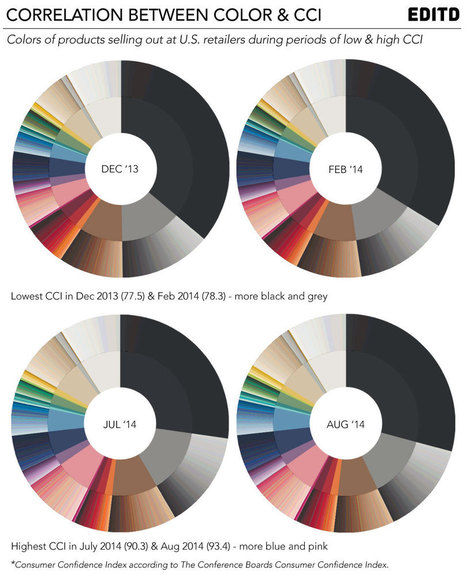

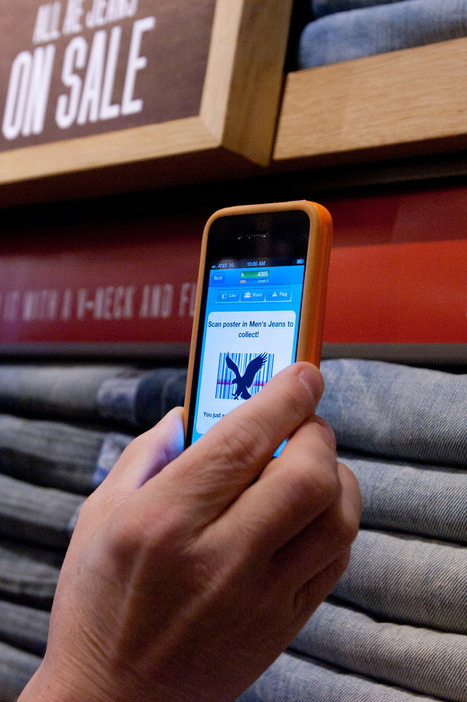


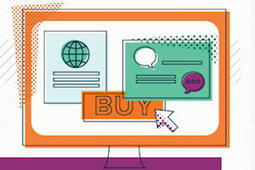


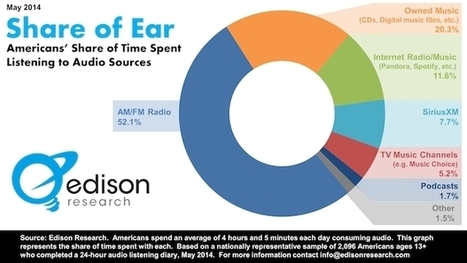





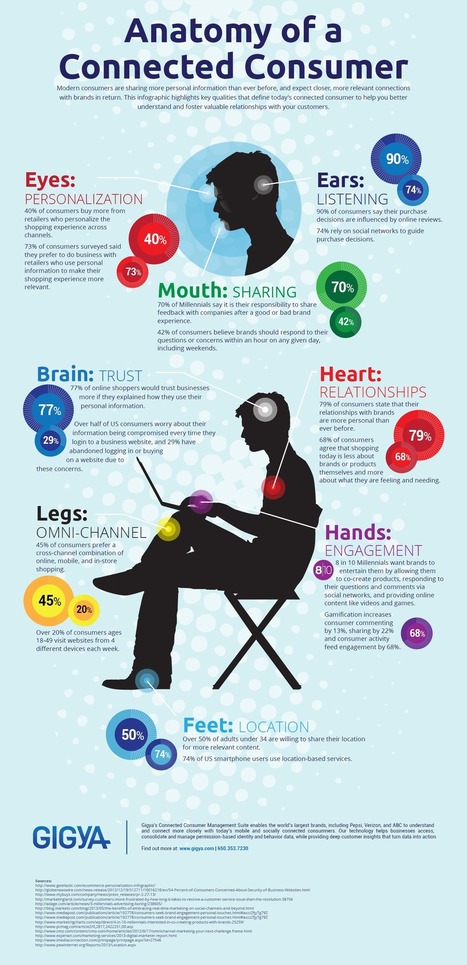

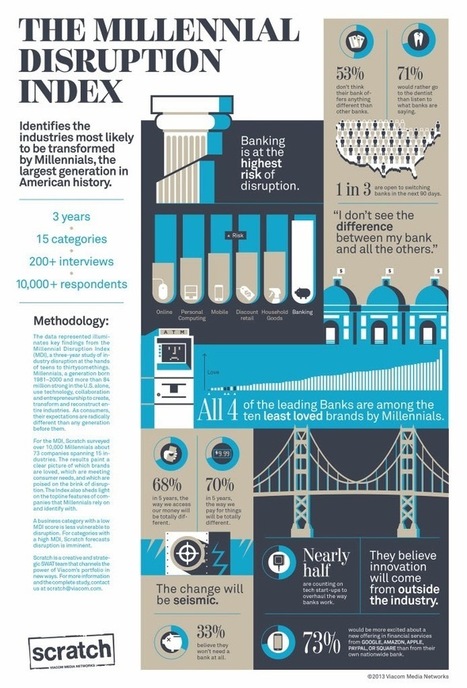



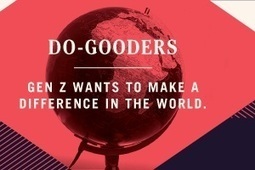



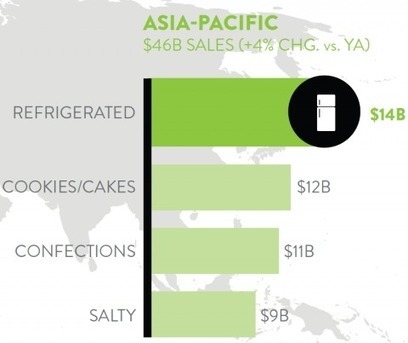





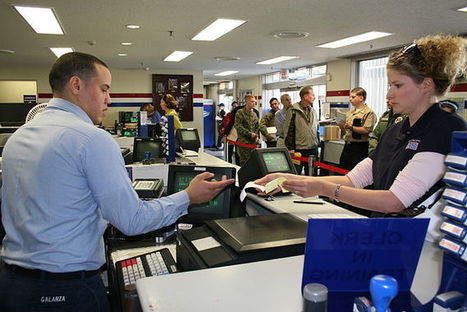







Simply put, when the Consumer Confidence Index drops, black sells!